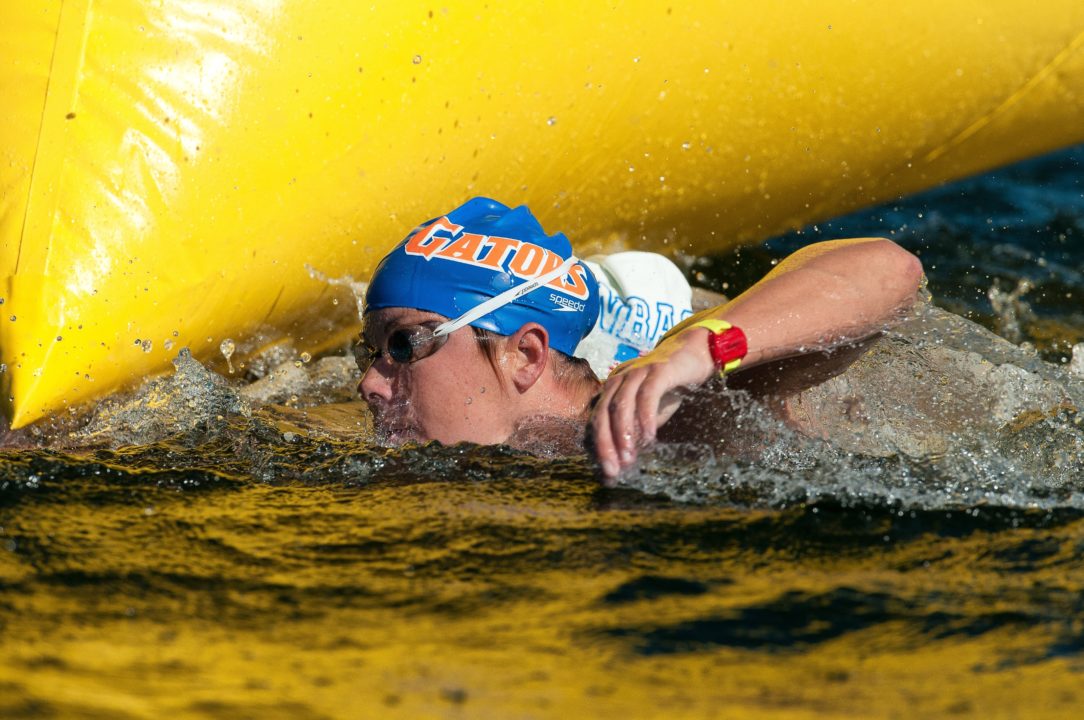It’s that time of year again (at least here in the northern hemisphere) and more folks are taking to open water swimming. One question I’ve been getting a lot lately is: What’s the best way to take buoy? There’s not necessarily a ‘best way’ to make the turn buoy – it’s really a function of the conditions. The first thing you need to identify is the proper orientation around the buoys – this is communicated during the pre-race briefings and hopefully on charts that accompany your entry and/or set up at check in. It’s of course vital to know which direction you’ll be turning (e.g., right shoulder, left shoulder).
Most often it is the first turn buoy that presents the greatest challenges – especially if the first turn is soon after the start. There is typically a lot of congestion and incidental contact at this point, so being in the lead group is a big advantage. If you’re not in the lead, keep your composer and attempt to take the tightest line possible. Keep your elbows high and stroke rate up while negotiating the turn. Be prepared for the contact and move as gracefully as possible and around the buoy. For novice swimmers I advise you take the turn wide and stay in ‘clean’ water. Thrashing and punching is not the approach you want to take – not only is it a waste of energy, you run the risk injuring another competitor and being disqualified.
Obviously taking the tightest line around the buoy is the fastest way to get through the turn. However, remember to swim within your ability and comfort level. If you’re not familiar, or comfortable swimming in contact with other swimmers you should practice this first in a pool or controlled ‘non race’ environment. You can also drop a buoy in the pool and practice your turns before race day. You should also spend some time on the course, checking out the buoys, before the starting gun goes off.
Above all: BE SAFE. Open water swimming racing is blast.
